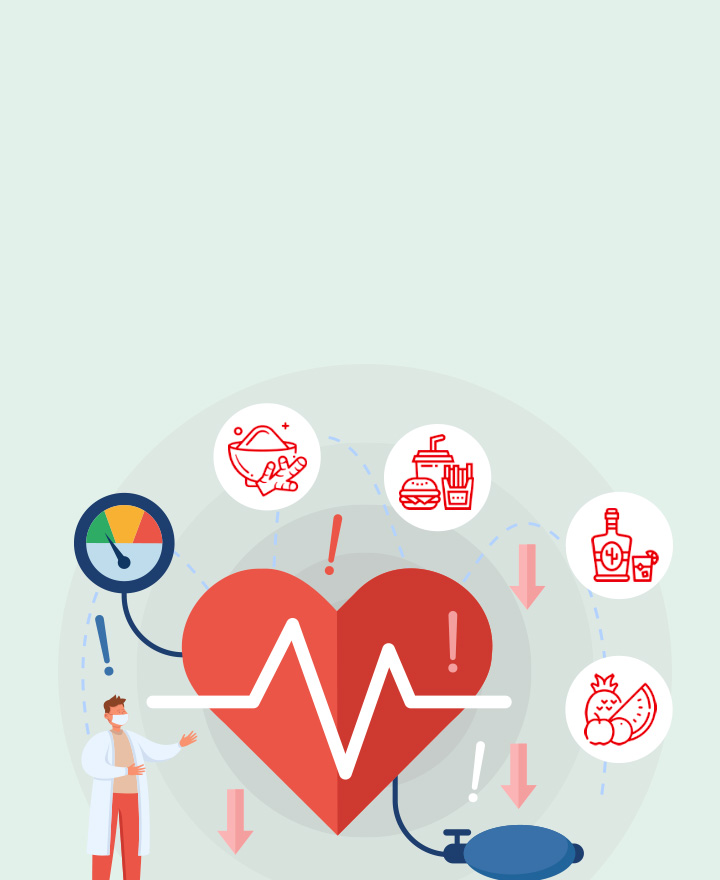

LDL Cholesterol: Symptoms, Causes, and Treatment
LDL (low-density cholesterol), also referred as the bad cholesterol, makes up most of cholesterol in a person’s body. When there is too much LDL cholesterol, it can build up in the walls of blood vessels creating plaque which overtime may narrow blood vessels and elevate the risk of heart disease. Read on to know more.
What is LDL?
LDL stands for low-density lipoprotein, commonly referred to as "bad cholesterol." It is a type of lipoprotein that carries cholesterol from the liver to the cells in the body. While cholesterol is essential for building cell membranes and producing certain hormones, having high levels of LDL cholesterol can be harmful.
Why is LDL considered "bad" cholesterol?
LDL cholesterol becomes problematic when there is too much of it in the bloodstream. The excess LDL can build up in the walls of arteries, leading to the formation of plaque. This process, called atherosclerosis, narrows and hardens the arteries, restricting blood flow and increasing the risk of heart disease, stroke, and other cardiovascular problems.
Ideal LDL levels:
• Optimal: Less than 100 mg/dL
• Near optimal/above optimal: 100–129 mg/dL
• Borderline high: 130–159 mg/dL
• High: 160–189 mg/dL
• Very high: 190 mg/dL or higher
Causes of High LDL
The following are significant causes for the rise in low-density lipoprotein in your body —
• Genetic reasons
• Age (as you age, LDL levels may increase)
• Gender (women are more at risk of high LDL levels)
• Existing medical conditions like diabetes, kidney failure, HIV, and more
• Medications consumed for lowering blood pressure and treating HIV
• Foods with high-fat content (like full-fat dairy products, processed foods, refined foods, fried food, and foods rich in saturated and trans fats)
• Sedentary lifestyle
• Being overweight or obese
• Increased use of tobacco-based products
How to Diagnose High LDL Cholesterol?
LDL, low-density lipoprotein, can be diagnosed with the help of a blood test. A CBC (complete blood count) will help determine your blood's cholesterol and triglyceride levels. The range of LDL in your blood will help doctors devise the right treatment plan to lower your bad cholesterol.
Children should get their first CBC test when they are between 9 and 11, and the test must be repeated once every 5 years. Men should get their blood tests done when they are over 45, with a repeat test every 5 years. Women should get their tests when they are over 55 and should repeat the test every 2 years.
Risk of High LDL Cholesterol
High levels of LDL cholesterol can lead to the following health complications:
• Diseases related to coronary arteries
• Diseases related to peripheral arteries
• Increased risk of cardiac ailments like heart attack and chest pain
• Stroke
How to Lower LDL Cholesterol?
To lower LDL levels, your doctor may advise you of following tips:
• Stay away from foods rich in trans and saturated fats, and include foods rich in fibre and essential nutrients; one should include fresh fruits, green leafy vegetables, and whole nuts and legumes in the daily diet.
• Aim to get about 30 minutes of physical exercise (like walking, running, etc.) every day to avoid fat build-up in the walls of the blood vessels.
• Being overweight or obese can increase your risk of high LDL; hence, you should aim to reduce about 15kg of your existing weight naturally.
• Giving up smoking and avoiding the use of all tobacco-related products
• Using medications like statins, Ezetimibe, or PCSK9 inhibitors to lower cholesterol levels
FAQs
1. Can I prevent instances of LDL being high in my blood?
Yes, low-density lipoprotein in your blood can be managed very well if you eat healthy and lead an active lifestyle. In short, avoid consumption of trans fats and saturated fats, start including fresh fruits and vegetables in your daily meals, and get about 30 minutes of physical exercise every day to maintain LDL at a healthy range.
2. Which foods should be compulsorily included in one’s daily diet to lower LDL levels?
You must compulsorily include foods rich in fibre to maintain healthy LDL levels in your blood. These include green vegetables and fresh fruits.
Conclusion
Low-density lipoprotein, or LDL, when present in excess, can make you highly prone to cardiac ailments. You should follow a healthy diet and maintain an active lifestyle to avoid fat and plaque build-up in your blood vessels. Getting tested at regular intervals is essential to monitor the LDL range in your blood. This helps you to treat it the right way.
One of the important components of our overall wellness is also being financially secured. Healthcare emergencies can happen any time, but a good health insurance policy can protect you from such uncertain situations. To know more about Wellness and other health related tips, visit the wellness corner.
Source: webmd.com, medicalnewstoday.com, mayoclinic.org
Disclaimer: This blog provides general information and discussions about health and related subjects. The information and other content provided in this blog, website or any linked materials are not intended and should not be considered or used as a substitute for medical advice, diagnosis, or treatment. Kindly contact your doctor before starting a new medicine or health regime.
Related Articles
Types of Cholesterol Test - LDL, HDL, Triglycerides & More
Cholesterol Lowering Oils - The Best and Worst
Home Remedies to Lower Your Cholesterol Levels
HDL cholesterol - How to boost your 'good' cholesterol
10 Myths You Should Know About Cholesterol
Published on January 6, 2025


 Health Insurance
Health Insurance  Travel Insurance
Travel Insurance  Car Insurance
Car Insurance  Cyber Insurance
Cyber Insurance  Critical Illness Insurance
Critical Illness Insurance
 Pet Insurance
Pet Insurance
 Bike/Two Wheeler Insurance
Bike/Two Wheeler Insurance  Home Insurance
Home Insurance  Third Party Vehicle Ins.
Third Party Vehicle Ins.  Tractor Insurance
Tractor Insurance  Goods Carrying Vehicle Ins.
Goods Carrying Vehicle Ins.  Passenger Carrying Vehicle Ins.
Passenger Carrying Vehicle Ins.  Compulsory Personal Accident Insurance
Compulsory Personal Accident Insurance  Travel Insurance
Travel Insurance  Rural
Rural